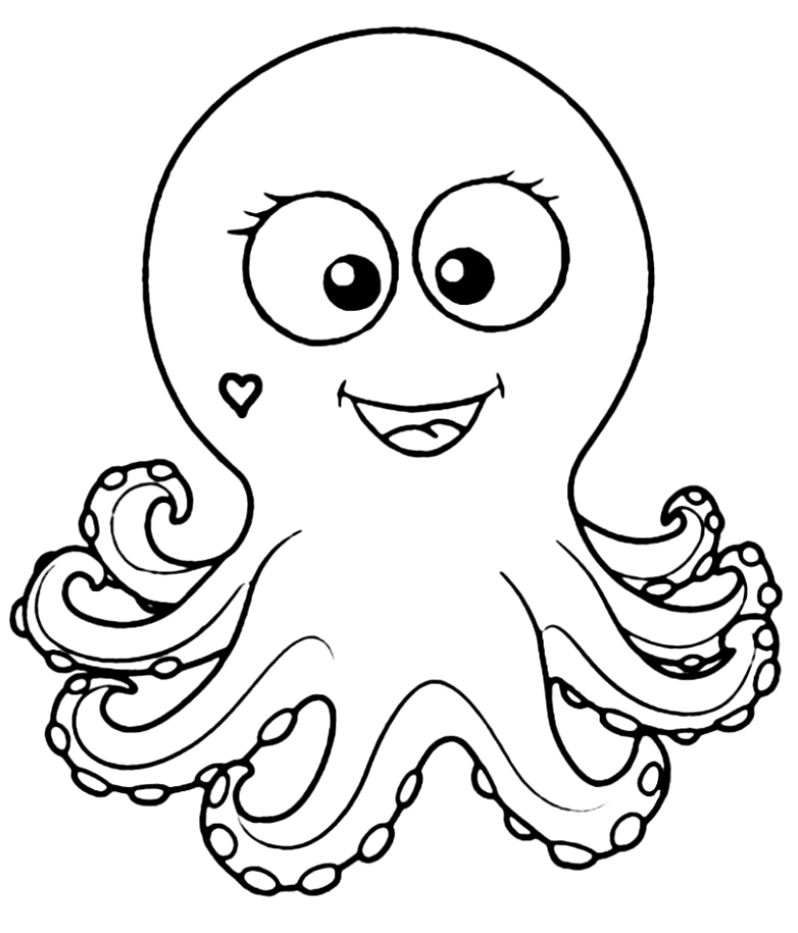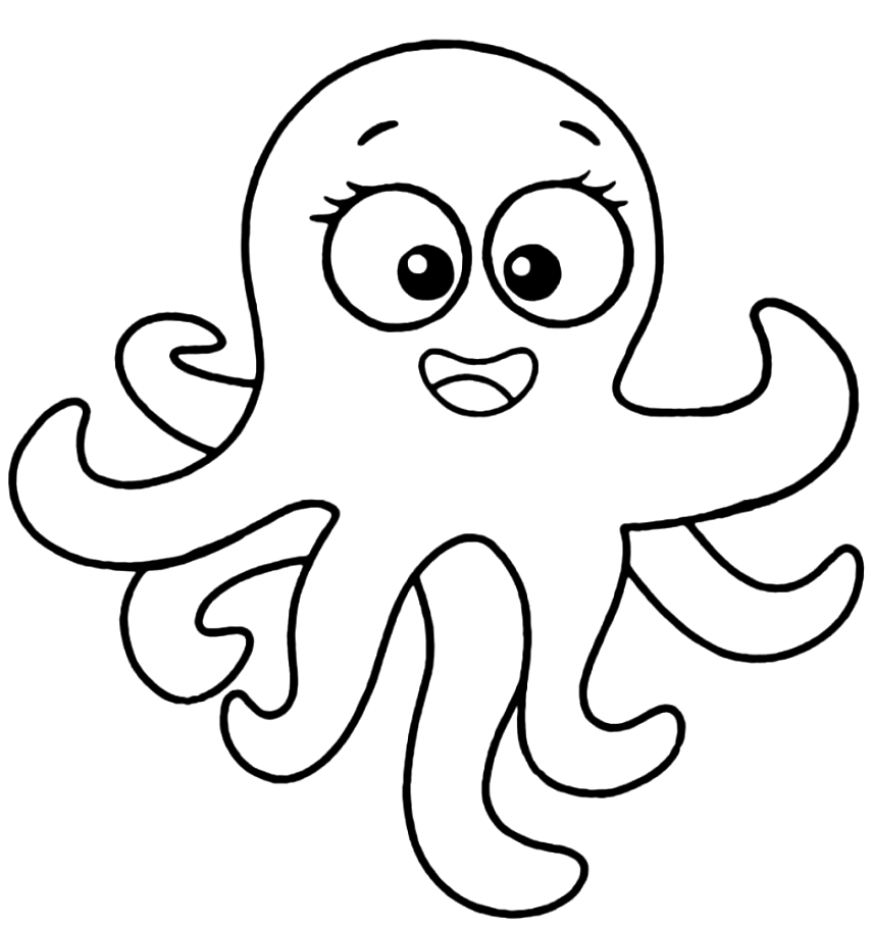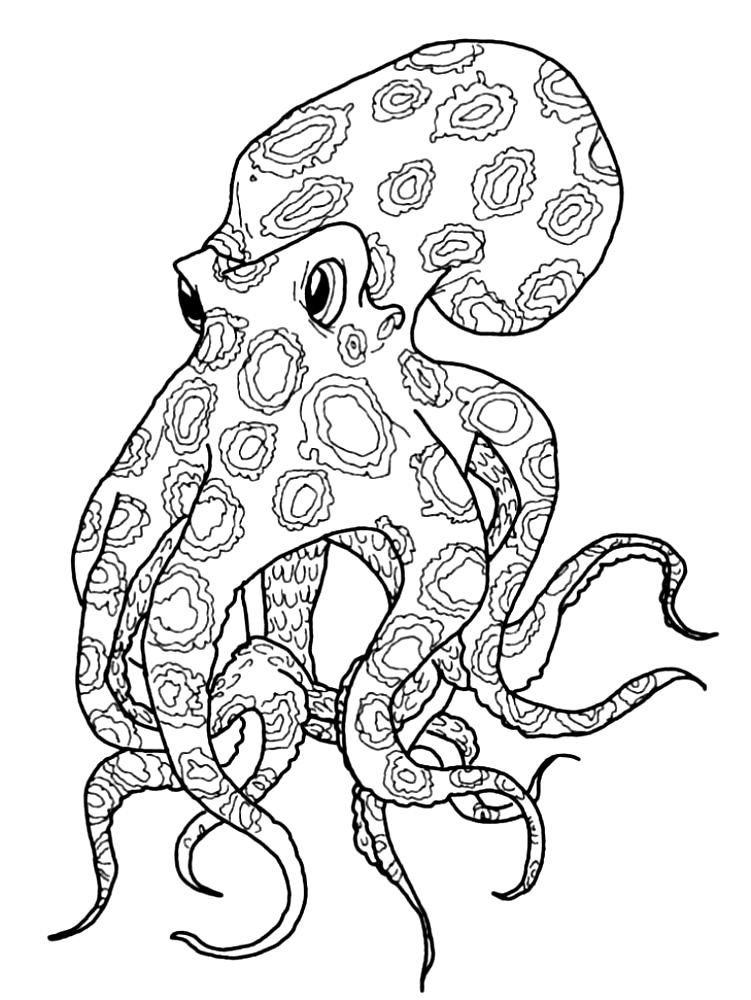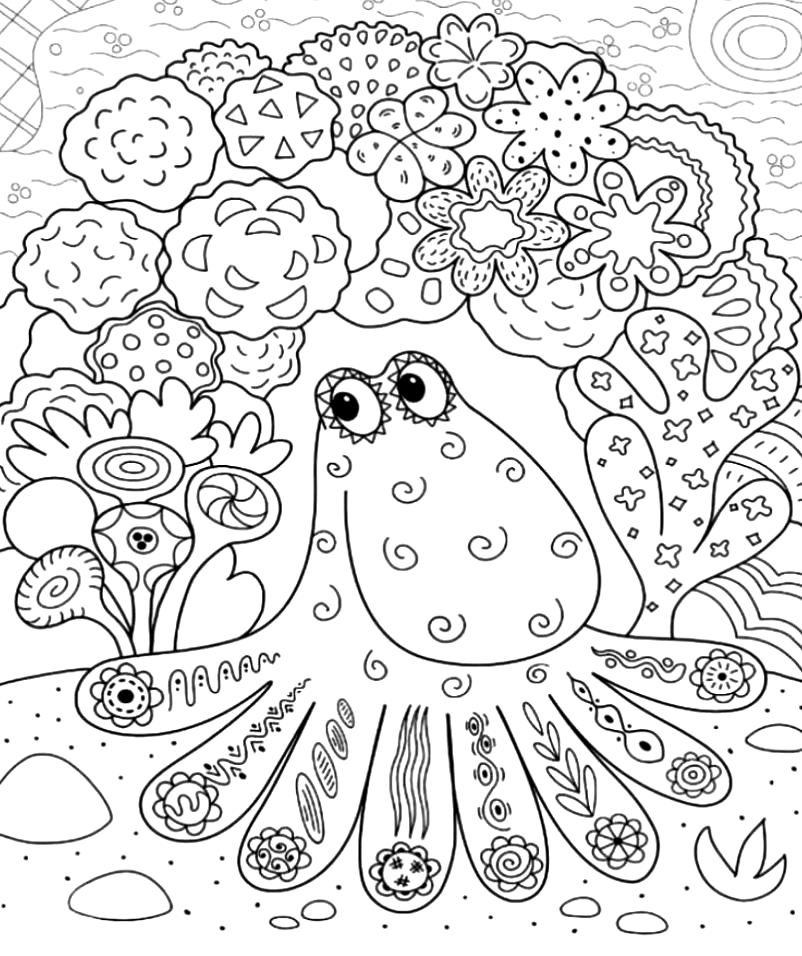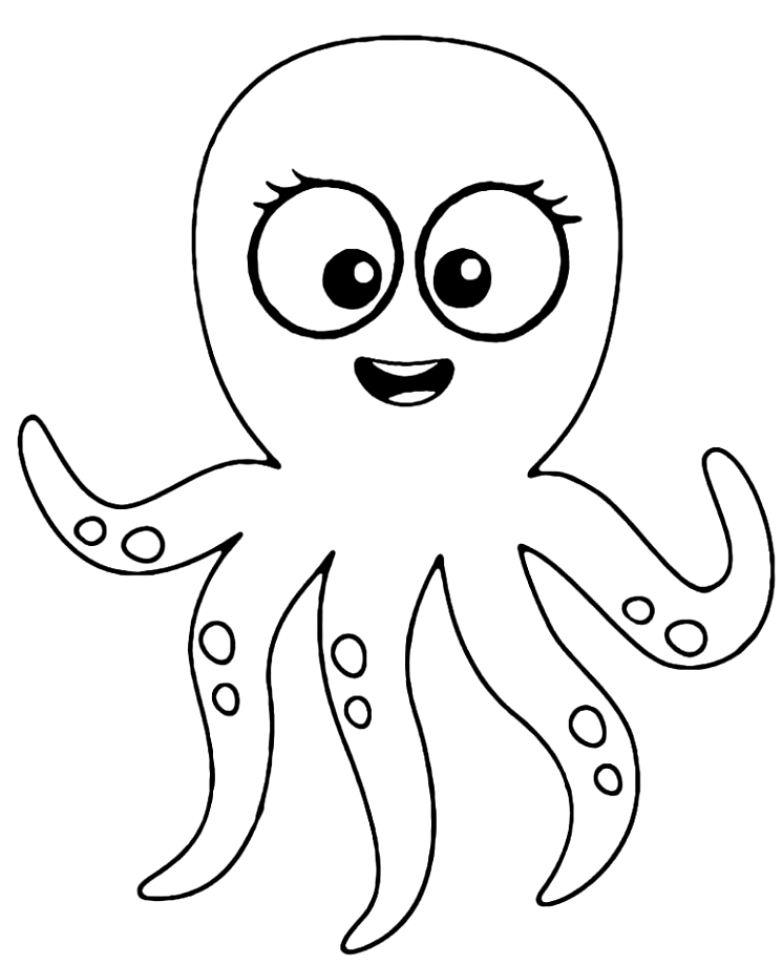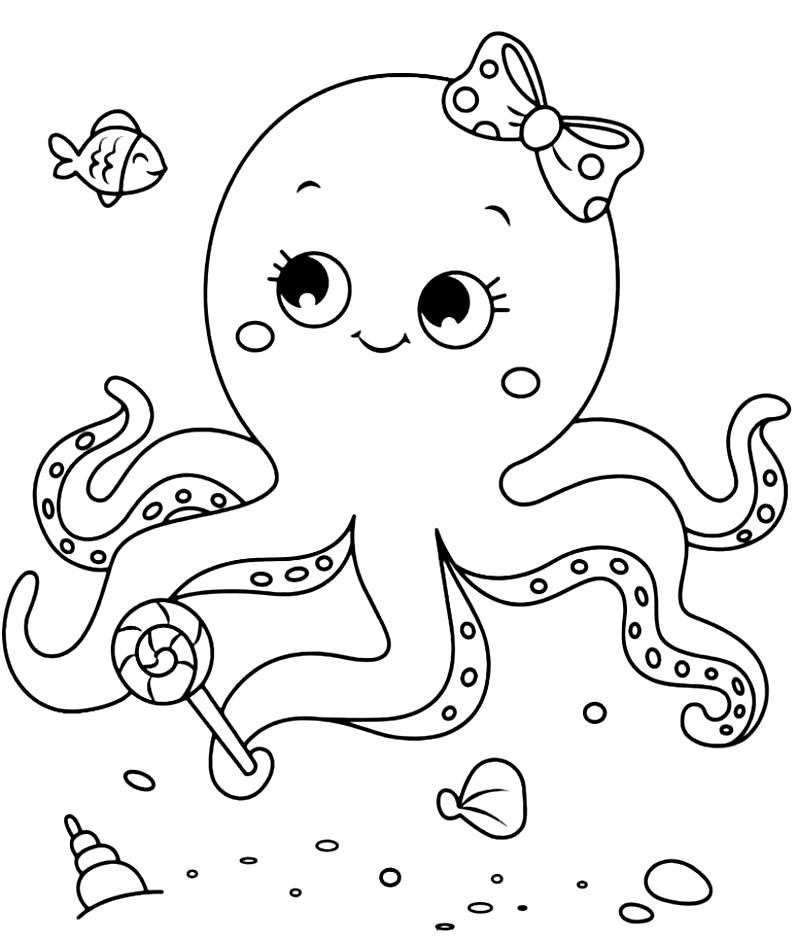Octopuses
Octopuses coloring pages are completely free and printable. We have prepared coloring pages for a very interesting creature that lives in the sea. This sea creature with many arms and soft skin looks very beautiful. We will need some colored pencils to work on the octopus coloring pages. These are the primary colors such as red, pink, black, gray, brown. When working with the octopus coloring page, you can choose free colors.
Octopus coloring pages (free printable)
Hope you enjoy the cute sea creature octopus coloring pages. Now we will give you interesting information about octopuses. Octopuses, with more than 1000 suction cups, 8 arms, 3 hearts, lengths that can reach 3 centimeters or 9 meters, and "extraterrestrial"-like morphology, may be the strangest and most different-looking creatures you can expect to encounter in the sea. 95% of all living things on Earth are invertebrates, and guess which animal is the smartest among invertebrates? Yes, octopuses! These interesting animals are a member of the class of cephalopods that have existed on earth for 500 million years. They lost their ancestral shells about 140 million years ago, and came very close to their present-day appearance and features. We can see them in every ocean and deep water in the world. Octopuses continue to impress countless people every day with their interesting videos on the internet such as opening covers and climbing stairs; But octopuses have many more interesting features than that. Examples of these are color changes, the ability to tear off their own arms, and perhaps most interestingly, their sense of taste by touch.
- Scientific name: Octopus, Tremoctopus, Enteroctopus, Eledone, Pteroctopus and many more
- Common names: Octopus, Octopus
- Team: Octopoda
- Size: 2.5 cm — 92 cm
- Weight: 1 g — 9.1 m
- Lifespan: 6 months — 5 years
- Diet: Oysters, shrimp, lobster, fish, sharks and even birds
- Habitat: Shell, reef, crevice, cave
- Population: All oceans; coastlines of every continent
- Conservation status: At least 289 species and populations unknown
There are 289 species in the Octopus order. The word octopus comes from the Greek word októpus, meaning "eight legs". Their appendages are arms, not tentacles. Because most octopus species have suction cups on their arms. Since two-thirds of their neurons are in their arms, they can move their limbs in different directions for different purposes at the same time. While trying to open the shellfish with one arm, he can look for food in a cave with the other arm.
Some octopuses even have warts. Two deep-sea octopuses of the genus Graneledone — G. pacifica and G. verrucosa — have swellings on their pink-colored mantles. These wart protrusions are the only thing that distinguishes the two species. Octopuses have excellent touch capabilities. The receptors on their suction cups allow them to detect the taste of the objects they touch.
Most octopuses in the Incirrata subgroup lack an endoskeleton or protective shell. This makes their bodies soft and allows them to pass through tiny cracks and crevices. In 2016, an octopus at the National Aquarium of New Zealand passed through a drain pipe directly into the sea.
The only incisors of octopuses are the parrot's beak, where their arms meet on their lower parts. Octopuses have powerful jaws and venomous saliva. Octopuses weren't always soft creatures. The ancestor of the octopus and squid had hard shells. A study revealed that these marine animals lost their "shell houses" during the Jurassic and Cretaceous Periods. Researchers believe that this loss of shells in today's octopus, squid and squid made them more agile at evading predators. It also reduced their chances of missing their prey.
Size of Octopuses
Octopuses can come in many different sizes. The best-known octopus species, Octopus vulgaris, is 30.5 to 91.4 centimeters long and weighs 3 to 10 kilograms.
The giant Pacific octopus (Enteroctopus dofleini) is the largest octopus. They are usually 5 meters long and 50 kg in weight. National Geographic recorded a record one weighing 272 kg and a length of 9.1 meters in the past. The smallest octopus, known as Octopus wolfi, is less than 2.5 cm and weighs less than 1 gram.
The Habitat of Octopuses
Octopuses live in oceans all over the world. Most are pelagic, meaning they live near the water surface inside seashells, reefs, and crevices. Some species live on the ocean floors and choose caves as homes.
Behaviors of Octopuses
Octopuses generally tend to live alone. Some octopus species hunt at night, while others hunt only at dusk or dawn. They squirt a dark ink-like liquid when they are scared or feel in danger. This move blinds the hunter and gives the octopus time to escape. The ink is thought to slow down the predator's sense of smell and taste.
Octopuses change color to camouflage. They can turn blue, gray, pink, brown or green. The mimic octopus can stretch its body to resemble more dangerous animals such as eels and lionfish. Octopuses can regrow their lost limbs.
Octopuses are fast swimmers but prefer to navigate slowly along the seafloor. When they need to act like arrows, they draw water into their bodies and throw it through a tube called a siphon. This move gives the octopus explosive power.
Nutrition of Octopuses
Octopuses are carnivores, meaning they eat meat. Mussels, shrimp, lobster, fish, sharks and even birds are among their meals. They usually attack their prey from above, wrap them in their arms and take them into their mouths.
Octopus Cubs
Octopuses have a short lifespan. Some species only live up to six months. Other species, such as the North Pacific giant octopus, can live as long as five years. As with almost any animal, the larger an octopus, the longer it will live.
Regardless of the outcome, octopuses die soon after mating. The male inserts his third right arm into the female's mantle cavity during reproduction and releases the sperm. In some cases, he literally gives the sperm from his hand to the female.
When the fry hatch, they are in the larval form. They drift in plankton clouds and eat other animal larvae until they mature. Being in the plankton cloud threatens to be eaten by other plankton predators.


